√画像をダウンロード natural greenhouse gases images 233744
Global warming is the unusually rapid increase in Earth's average surface temperature over the past century primarily due to the greenhouse gases released as people burn fossil fuels The global average surface temperature rose 06 to 09 degrees Celsius (11 to 16° F) between 1906 and 05, and the rate of temperature increase has nearlySources and Sinks of Major Greenhouse Gases Associated with New York State's Natural and Working Lands Forests, Farms, and Wetlands Final Report Prepared for New York State Energy Research and Development Authority Albany, NY Diane Bertok Project Manager Prepared by E&S Environmental Chemistry, Inc Corvallis, OR TC McDonnell Global average carbon dioxide concentrations for July 17 measured by NASA's Orbiting Carbon Observatory2 (OCO2) Carbon dioxide (CO 2) is an important greenhouse gas that is released through human activities such as burning fossil fuels and deforestation, as well as natural processes such as plant respiration and volcanic eruptionsOnce CO 2 is added to the

Greenhouse Gases And The Enhanced Greenhouse Effect Video Lesson Transcript Study Com
Natural greenhouse gases images
Natural greenhouse gases images- This rapid warming trend cannot be explained by natural cycles alone, scientists have concluded The only way to explain the pattern is to include the effect of greenhouse gases (GHGs) emitted by Greenhouse gases are gases that can trap heat They get their name from greenhouses A greenhouse is full of windows that let in sunlight That sunlight creates warmth The big trick of a greenhouse is that it doesn't let that warmth escape That's exactly how greenhouse gases act They let
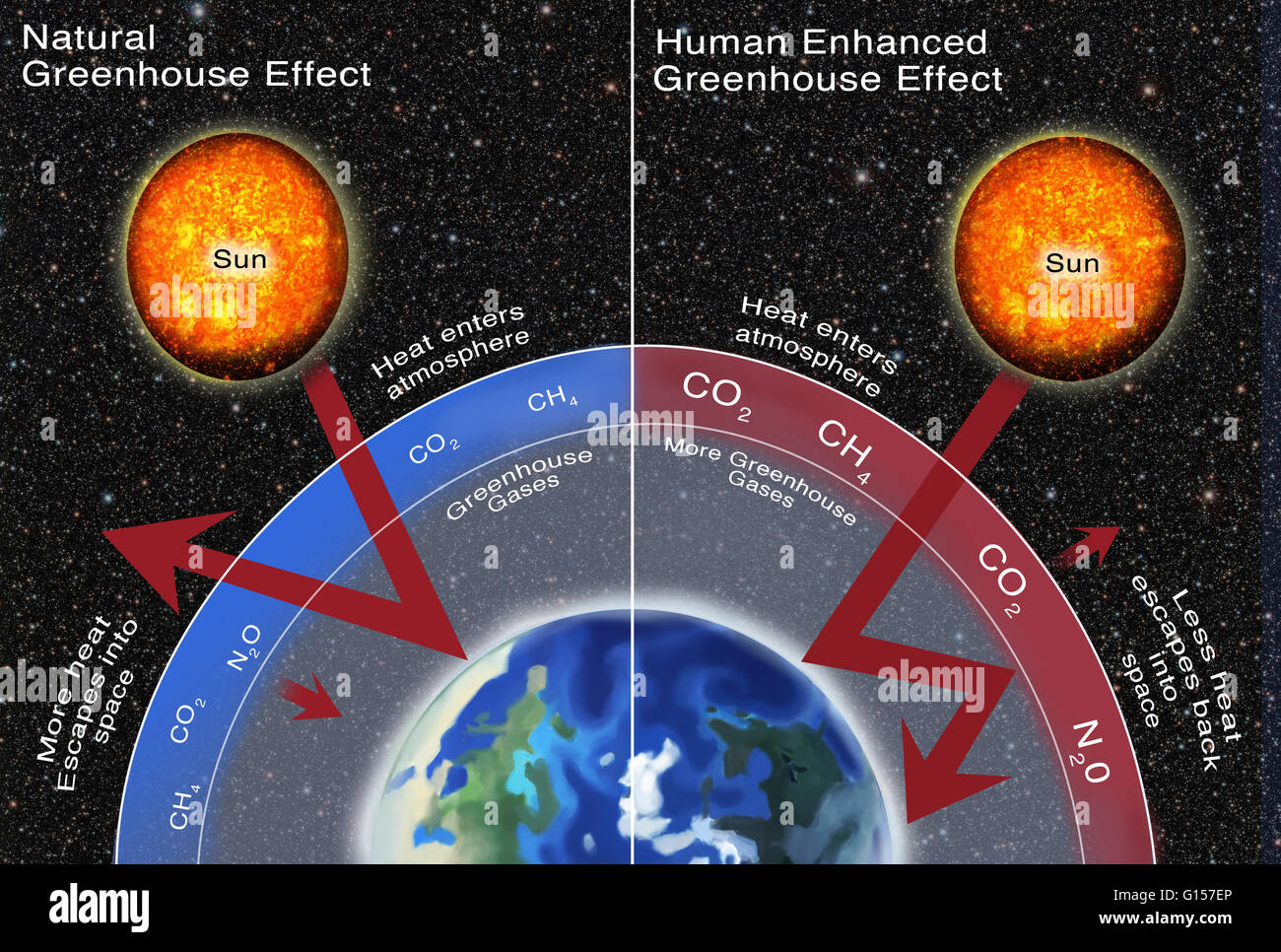



Greenhouse Gas Effect Comparison Illustration Comparing The Natural Greenhouse Gases Emitted To The Human Enhanced Greenhouse Gases Emitted With A Higher Emission Of Greenhouse Gases Shown On The Right More Heat Is
The answer may not be as clear as one might assume, because the top emitters change depending on how the data is collected and whatGreenhouse gas emissions are greenhouse gases vented to the Earth's atmosphere because of humans the greenhouse effect of their 50 billion tons a year causes climate changeMost is carbon dioxide from burning fossil fuels coal, oil, and natural gasThe largest polluters include coal in China and large oil and gas companies, many stateowned by OPEC and Russia Carbon dioxide (CO 2) is the primary greenhouse gas emitted through human activitiesIn 19, CO 2 accounted for about 80 percent of all US greenhouse gas emissions from human activities Carbon dioxide is naturally present in the atmosphere as part of the Earth's carbon cycle (the natural circulation of carbon among the atmosphere, oceans, soil, plants, and animals)
Yes, by increasing the abundance of greenhouse gases in the atmosphere, human activities are amplifying Earth's natural greenhouse effect Virtually all climate scientists agree that this increase in heattrapping gases is the main reason for the 18°F (10°C) rise in global average temperature since the late nineteenth centuryTransmission and distribution networks;Greenhouse gas emissions increased 70 percent between 1970 and 04 Emissions of carbon dioxide, the most important greenhouse gas, rose by about 80 percent during that time The amount of carbon dioxide in the atmosphere today far exceeds the natural
greenhouse gases images 3,3 greenhouse gases stock photos, vectors, and illustrations are available royaltyfree See greenhouse gases stock video clips of 34 sun radiating to a plant thermal radiation effects global warming greenhousegases gases in atmosphere light pollution effect gases cartoon atmosphere gases atmospheric gases cartoon The greenhouse effect happens when certain gases, which are known as greenhouse gases, accumulate in Earth's atmosphereGreenhouse gases include carbon dioxide (CO 2), methane (CH 4), nitrous oxide (N 2 O), ozone (O 3), and fluorinated gases Greenhouse gases allow the sun's light to shine onto Earth's surface, and then the gases, such as ozone, The 'greenhouse effect' is the warming of climate that results when the atmosphere traps heat radiating from Earth toward space Certain gases in the atmosphere resemble glass in a greenhouse, allowing sunlight to pass into the 'greenhouse,' but blocking Earth's heat from escaping into space The gases that contribute to the greenhouse effect include water vapor,




Climate Change Science And Impacts Factsheet Center For Sustainable Systems




Greenhouse Gases Copernicus
The warming effect of the greenhouse gases is expected to take place everywhere, but the cooling effect of the pollution aerosols will be somewhat regionally dependent, near and downwind of industrial areas No one knows what the outcome will be of atmospheric warming in some regions and cooling in othersBrowse 732 reduce greenhouse gases stock photos and images available or start a new search to explore more stock photos and images emission mini infographic reduce greenhouse gases stock illustrations woman worker against coalfired power station reduce greenhouse gases stock pictures, royaltyfree photos & imagesSince the Industrial Revolution, rising emissions of greenhouse gases—including carbon dioxide, methane, nitrous oxide, and others—have been the driving force behind climate change Who is responsible for emitting the most greenhouse gases?
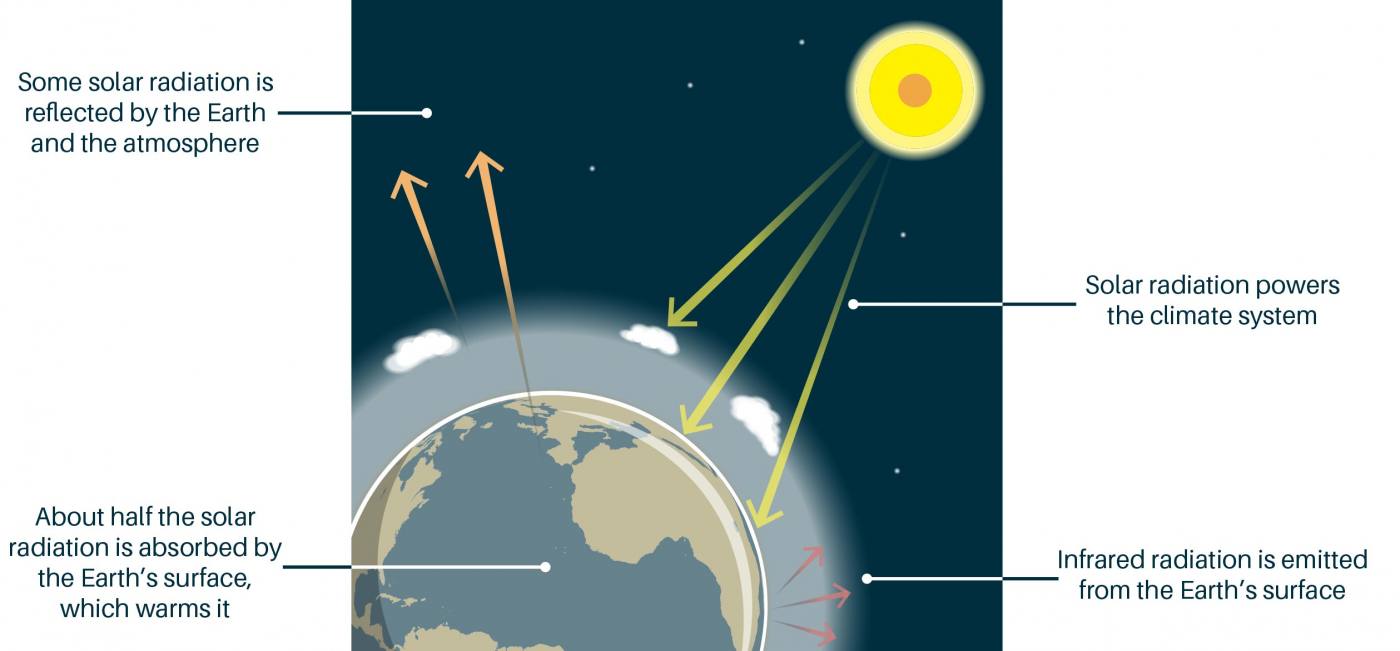



The Greenhouse Effect British Geological Survey




Climate Change Background Georgian Bay Biosphere
On Earth, human activities are changing the natural greenhouse Over the last century the burning of fossil fuels like coal and oil has increased the concentration of atmospheric carbon dioxide (CO 2)This happens because the coal or oil burning process combines carbon with oxygen in the air to make CO 2To a lesser extent, the clearing of land for agriculture, industry, and other human This natural greenhouse effect is what keeps the Earth's climate livable Without it, the Earth's surface would be an average of about 60 The greenhouse effect is the way in which heat is trapped close to Earth's surface by "greenhouse gases" These heattrapping gases can be thought of as a blanket wrapped around Earth, keeping the planet toastier than it would be without them Greenhouse gases include carbon dioxide, methane, and nitrous oxides




Greenhouse Gas Wikipedia
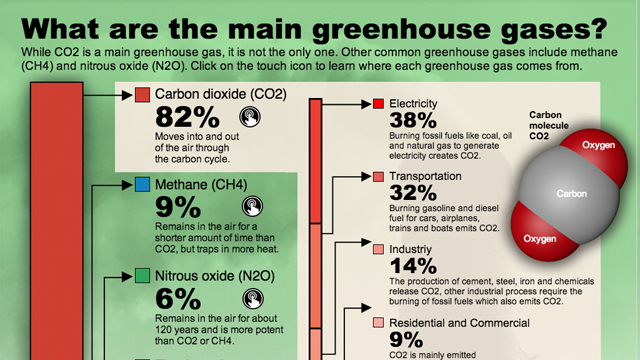



What Are Greenhouse Gases And Where Do They Come From Kqed
Oil and gas infrastructure include natural gas and oil storage facilities ;It must be distinguished from naturally occurring stratospheric O 3, which has a very different role in the planetary radiation balanceThe primary natural source of surface O 3 is the subsidence of stratospheric O 3 fromThe Greenhouse Effect Earth is much colder than the sun, but it is warmer than the space outside its atmosphere Earth's atmosphere is made up of gases, and these gases
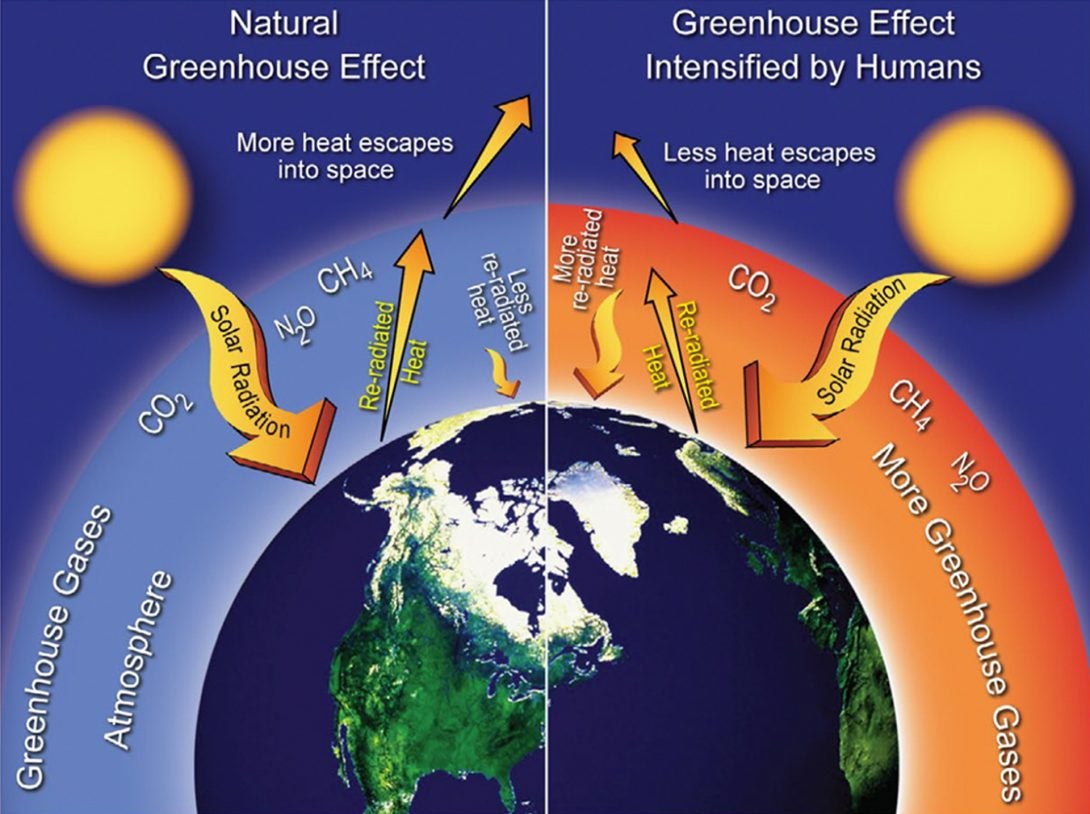



Causes Building Resilience Against Climate Effects University Of Illinois Chicago




Greenhouse Gas Effect Comparison Illustration Comparing The Natural Greenhouse Gases Emitted To The Human Enhanced Greenhouse Gases Emitted With A Higher Emission Of Greenhouse Gases Shown On The Right More Heat Is
In 19, the Annual Greenhouse Gas Index was 145, which represents a 45percent increase in radiative forcing (a net warming influence) since 1990 (see Figure 1) Of the greenhouse gases shown in Figure 1, carbon dioxide accounts for by far the largest share of radiative forcing since 1990, and its contribution continues to grow at a steady rateGreenhouse gases that occur both naturally and from human activities include water vapor, carbon dioxide (CO 2), methane (CH 4), nitrous oxide (N 2 O) and ozone (O 3) Other greenhouse gases have essentially no natural sources, but are side products of industrial processes or manufactured for human purposes such as cleaning agents, refrigerants Reservoir gases make up about 13% of our total greenhouse gas emissions When land is flooded to make a reservoir, and plants and soil collect in the reservoir waters and downstream, this organic
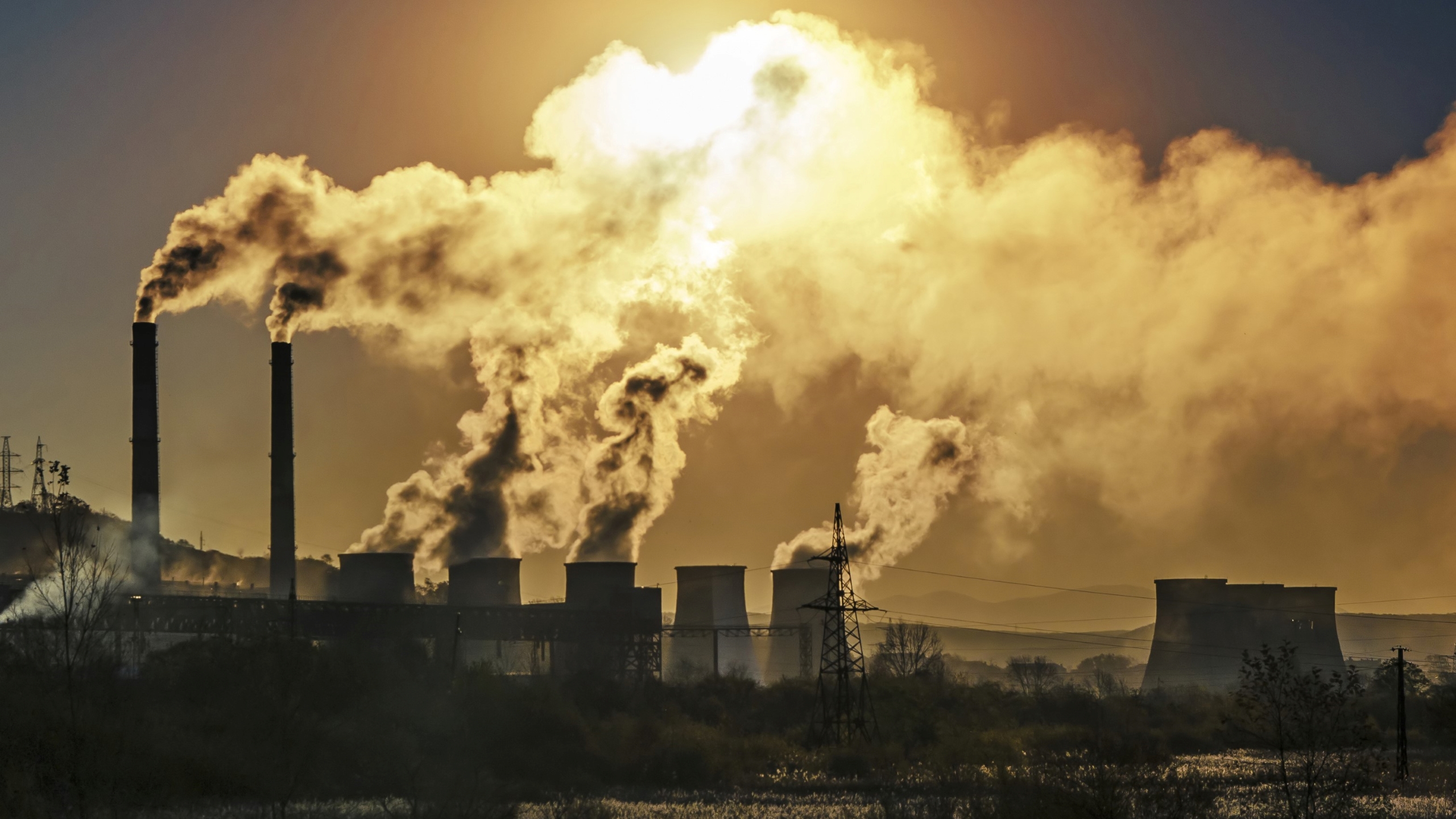



Greenhouse Gases Causes Sources And Environmental Effects Live Science




The Basics Greenhouse Gases Rehabilitation For The Green Soul
,002 greenhouse effect stock photos, vectors, and illustrations are available royaltyfree See greenhouse effect stock video clips of 1 greenhouse effect diagram commercial spraying water on plants greenhouse gas effect global warming posters sun earth diagram energy poster global warming global warming solutions sun radiating to a plantNatural Greenhouse Effect The Greenhouse Effect is a natural phenomenon It has been happening on earth for millions of years The natural greenhouse effect happens due to water vapour and particles of water present in the atmosphere This phenomenon has enabled life to emerge on land from the oceans Credit Spencer Platt/Getty Images the primary component of natural gas and a potent greenhouse gas released in leaks throughout the oil and gas development supply chain And while there's
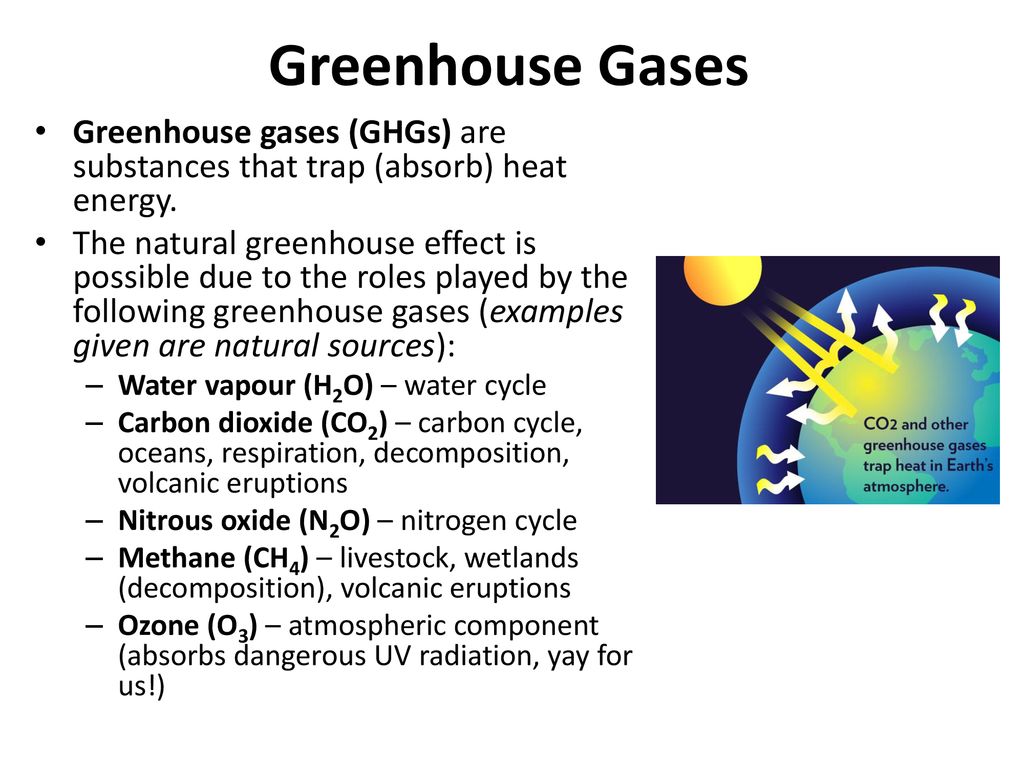



Greenhouse Gases And Climate Change Ppt Download




13 4 Pollution Introduction To Human Geography
Johnny Stockshooter—age fotostock/Imagestate The next most significant greenhouse gas is surface, or lowlevel, ozone (O 3)Surface O 3 is a result of air pollution;Greenhouse gases have very different warming effects one tonne of methane does not have the same impact on warming as one tonne of CO 2Carbon dioxide equivalents (CO 2 e) attempt to convert the warming impact of the range of greenhouse gases into a single metric This is done by multiplying each gas by its 100year 'global warming potential' value the amount of warming oneFluorinated Gases (HFCs, PFCs, SF 6) Fluorinated gases are emitted in smaller quantities than the other greenhouse gases, but what they lack in volume they can make up in potency and long lifespans in the atmosphere, ranging from 1270 years for HFCs to ,000 years for PFCs and about 3,0 years for SF6




The Enhanced Greenhouse Effect Geographycasestudy Com
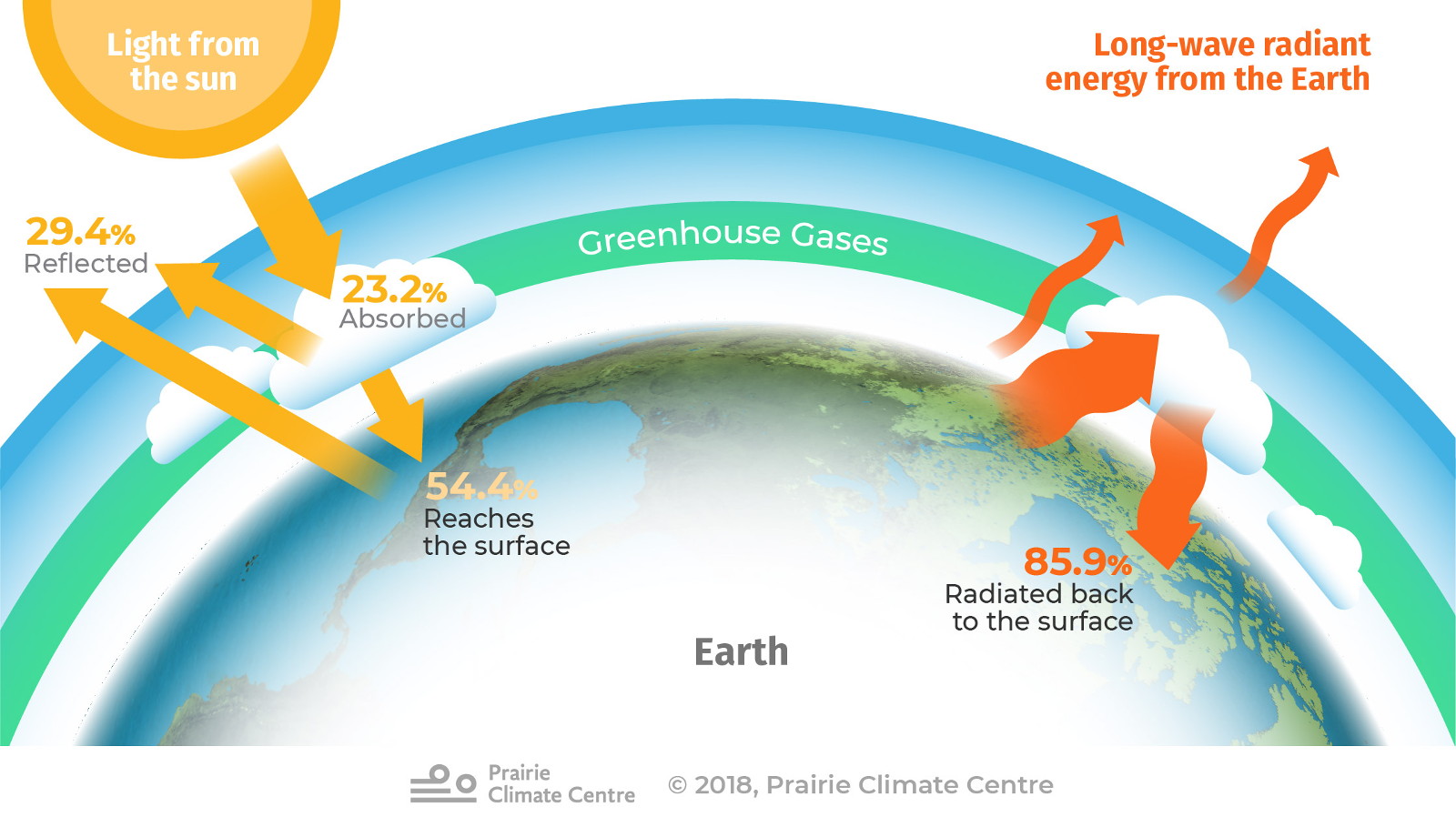



Greenhouse Gases Climate Atlas Of Canada
Greenhouse gas, any gas that has the property of absorbing infrared radiation (net heat energy) emitted from Earth's surface and reradiating it back to Earth's surface, thus contributing to the greenhouse effect Carbon dioxide, methane, and water vapour are the most important greenhouse gases (To a lesser extent, surfacelevel ozone, nitrous oxides, and fluorinated gasesWater vapor is the Earth's most important natural greenhouse gas Water vapor and clouds cause most of the Earth's natural greenhouse effect and account for about 90% of the total heatretaining capacity of the atmosphere Greenhouse gases can also reabsorb solarMain Greenhouse Gases Multiple gases contribute to the greenhouse effect that sets Earth's temperature over geologic time Small changes in the atmospheric concentration of these gases can lead to changes in temperature that make the difference between ice ages when mastodons roamed the Earth, and the sweltering heat in which the dinosaurs lived




Greenhouse Effect An Overview Sciencedirect Topics




Too Much Of A Good Thing
Greenhouse gases Sources As greenhouse gases are essential for the existence of life, they are present in the atmosphere in a trace amount Natural sources of GHGs are volcanos, respiration by living organisms, decay and combustion of organic matter, etc The amounts of GHGs are balanced in the atmosphere naturally by many physical, chemical The concept that the natural greenhouse effect has been enhanced by increased atmospheric concentrations of greenhouse gases (such as CO 2 and methane) emitted as a result of human activities These added greenhouse gases cause the earth to warmThe problems begin when human activities distort and accelerate the natural process by creating more greenhouse gases in the atmosphere than are




Federation Of Maori Authorities Kia Ora Whanau What Are Greenhouse Gases Or Ghg For Short Earth S Atmosphere Is A Mix Of Gases Water Vapour And Particles That Constantly Mix And Mingle



Mr G S Environmental Systems 6 1 1 The Natural Greenhouse Effect
Greenhouse Gas Carbon Dioxide Share of Global GHG Emissions 2530% Futtsu Thermal Power Station near Tokyo Generating electricity and heat by burning fossil fuels like coal, natural gas and oil produces more greenhouse gas (GHG) emissions than any human activity, accounting for at least one quarter of all global emissionsFind the perfect Greenhouse Gases stock illustrations from Getty Images Select from premium Greenhouse Gases images of the highest qualityTo form natural gas molecules, or natural greenhouse gases There are five natural greenhouse gases in Earth's atmosphere These include water vapor, ozone, carbon dioxide, methane, and nitrous oxide Greenhouse gases are an important part of the atmosphere because they protect the Earth from the Sun's harmful UV radiation while creating the




4 4 Climate Change Amazing World Of Science With Mr Green
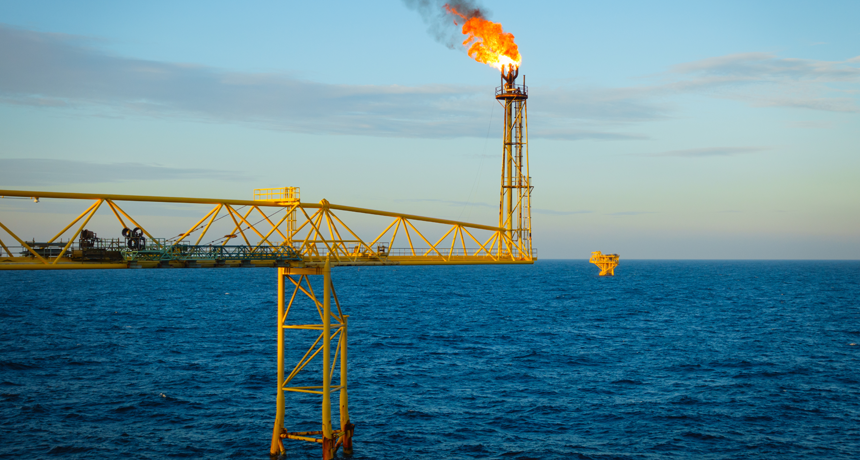



Explainer Co2 And Other Greenhouse Gases Science News For Students
A Huntington Beach, Calif biotech company is making eyewear, purses, and other accessories using air and greenhouse gases as feedstock – gases that would otherwise release to the atmosphereBrowse 17,305 greenhouse gases stock photos and images available, or search for reduce greenhouse gases or reducing greenhouse gases to find more great stock photos and pictures wind energy versus coal fired power plant greenhouse gases stock pictures, royaltyfree photos & images power plant in the sunrise greenhouse gases stock picturesAtmosphere & Greenhouse Gases The natural greenhouse effect is necessary for the temperature of earth to support current life systems The enhanced greenhouse effect caused by a greater buildup of carbon dioxide and methane (and other greenhouse gases) leads to less radiated heat leaving the atmosphere, resulting in warmer global temperatures




Enhanced Greenhouse Gas Effect Greenhouse Effect
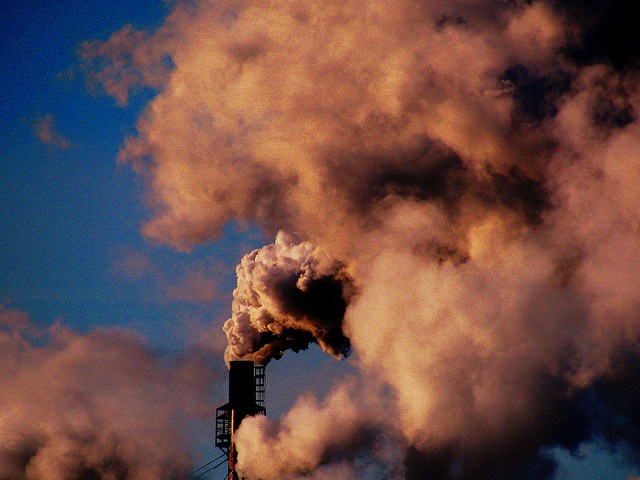



The Enhanced Greenhouse Effect Curious
Greenhouse Gases The presence of greenhouse gases in the atmosphere is a natural component of the climate system and helps to maintain the Earth as a habitable planet (Figure 3) Greenhouse gases are relatively transparent to incoming solar radiation, allowing the sun's energy to pass through the atmosphere to the surface of the Earth The Greenhouse gases keep our planet livable by holding onto some of Earth's heat energy so that it doesn't all escape into space This heat trapping is known as the greenhouse effect Just as too little greenhouse gas makes Earth too cold, too much greenhouse gas makes Earth too warm Over the last century, humans have burned coal, oil, andAnd active, closed and abandoned natural gas wells NYSERDA's 14 New York State GHG Inventory reports that natural gas leakage makes up about 11% of methane emissions (1% of all NYS greenhouse gas emissions) Existing oil and



Greenhouse Effect Body Used Water Process Earth Plants Form Energy Gas




Greenhouse Gases And The Enhanced Greenhouse Effect Video Lesson Transcript Study Com




What Would Happen To The Climate If We Stopped Emitting Greenhouse Gases Today




What Is An Enhanced Greenhouse Effect Universe Today




The Enhanced Greenhouse Effect Global Warming Ozcoasts




The Perks Of Greenhouse Effect Top 5 Advantages Of Greenhouse Gases By Ameelia Black Medium




The Principal Greenhouse Gases And Their Sources Neef



3




Greenhouse Effect Department Of Agriculture Water And The Environment
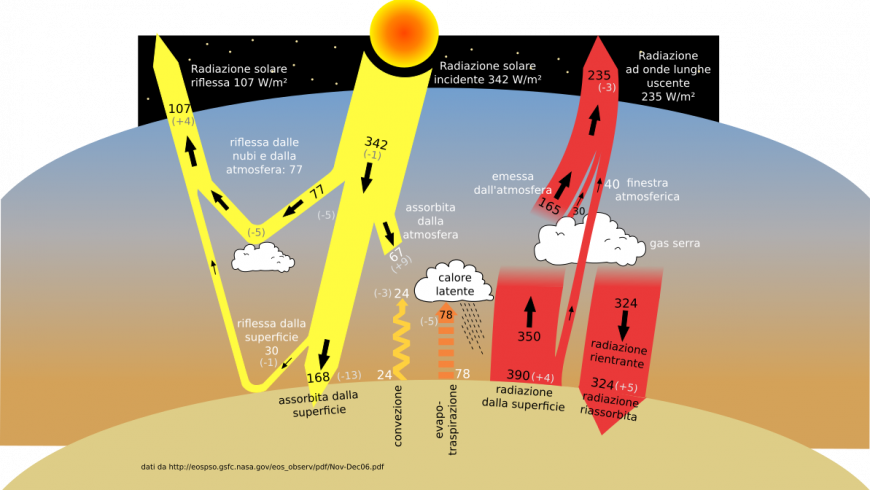



Greenhouse Gases What Are They What Can We Do To Reduce Emissions



English Comprehension Green House Worksheets 6th Grade Cbse



Earth Environment Greenhouse Effect Natural Greenhouse Effect Image Visual Dictionary
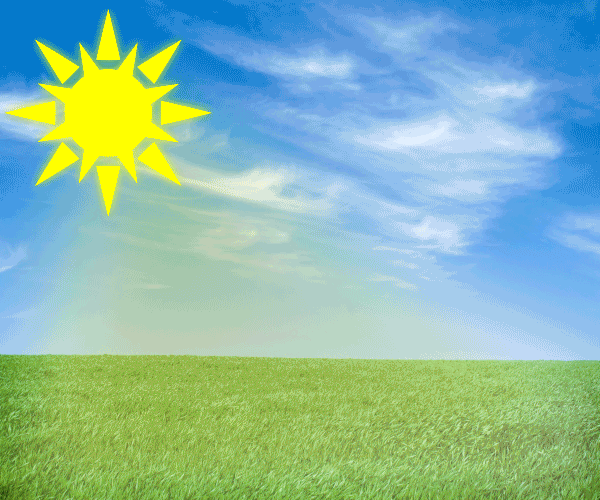



1 The Natural Greenhouse Effect



1




Greenhouse Gases U S Energy Information Administration Eia




What Is The Greenhouse Effect




Greenhouse Effect 101 Nrdc



The Greenhouse Effect



Global Warming
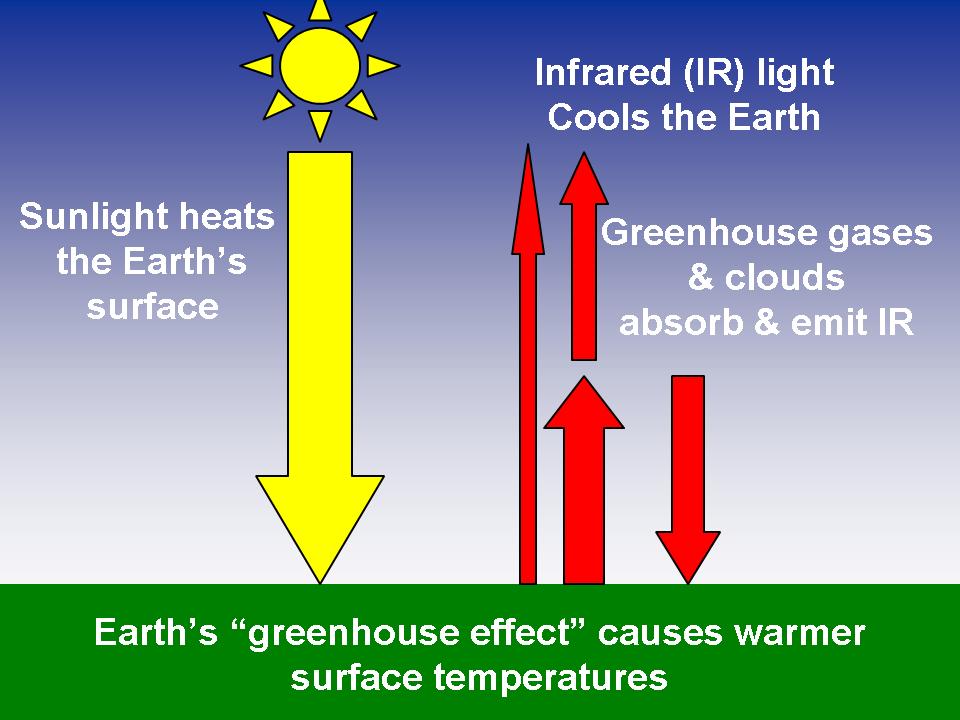



Weatherquestions Com What Is The Greenhouse Effect What Are Greenhouse Gases




5 Notorious Greenhouse Gases Britannica



Climate Science Investigations South Florida Energy The Driver Of Climate




How Does Earth S Greenhouse Effect Work Saving Earth Encyclopedia Britannica
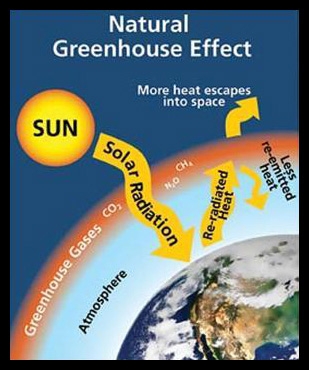



Carbon Connections 1 3 Carbon Forcing




A Comparative Diagram Of Natural Greenhouse Gases And The Variety Of Download Scientific Diagram




Carbon Dioxide Methane Nitrous Oxide And The Greenhouse Effect Conservation In A Changing Climate
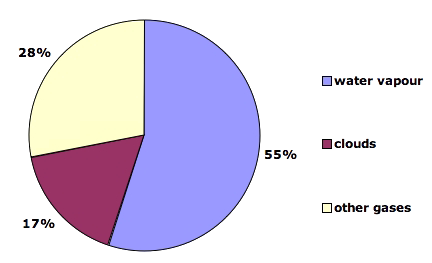



What Gases Are Greenhouse Gases Jean Marc Jancovici




Greenhouse Effect Images Stock Photos Vectors Shutterstock




The Greenhouse Effect Niwa




Greenhouse Effect 101 Nrdc




Contributions Of Natural Systems And Human Activity To Greenhouse Gas Emissions Sciencedirect




Bay Soundings L Tampa Bay S Science And Nature News Journal




Natural Causes Of Climate Change 9 Natural Causes Of Climate Change
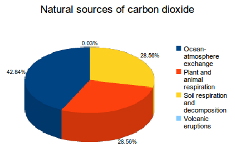



Greenhouse Gas Emissions Main Sources What S Your Impact




The Greenhouse Effect World101




Greenhouse Effect Images Stock Photos Vectors Shutterstock
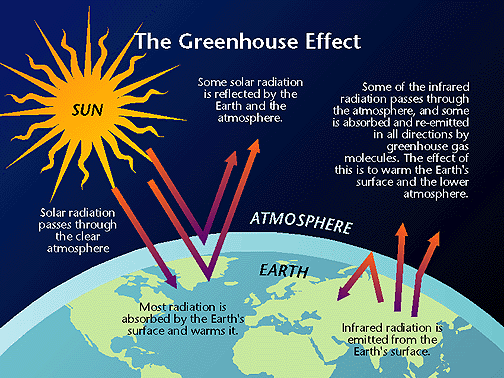



This Is Historical Material Frozen In Time The Web Site Is No Longer Updated And Links To External Web Sites And Some Internal Pages Will Not Work Life As We Know It Is Possible On Earth Because Of A Natural Greenhouse Effect That Keeps Our Planet About 60o




Rnc50 Roteiro Para A Neutralidade Carbonica




Representation Of The Natural Greenhouse Gas Effect Higher Levels Of Download Scientific Diagram




Greenhouse Effect Definition Diagram Causes Facts Britannica



c News




The Greenhouse Effect Illustration Infographic Natural Process That Warms The Earth Surface Canstock




What Are Greenhouse Gases And Where Do They Come From Kqed




Climate Processes Marian Koshland Science Museum




Greenhouse Effect And Greenhouse Gases Youtube




What Is Climate Change Climate Assembly




Modern Atmosphere Time Scavengers




The Greenhouse Effect Climate Matters
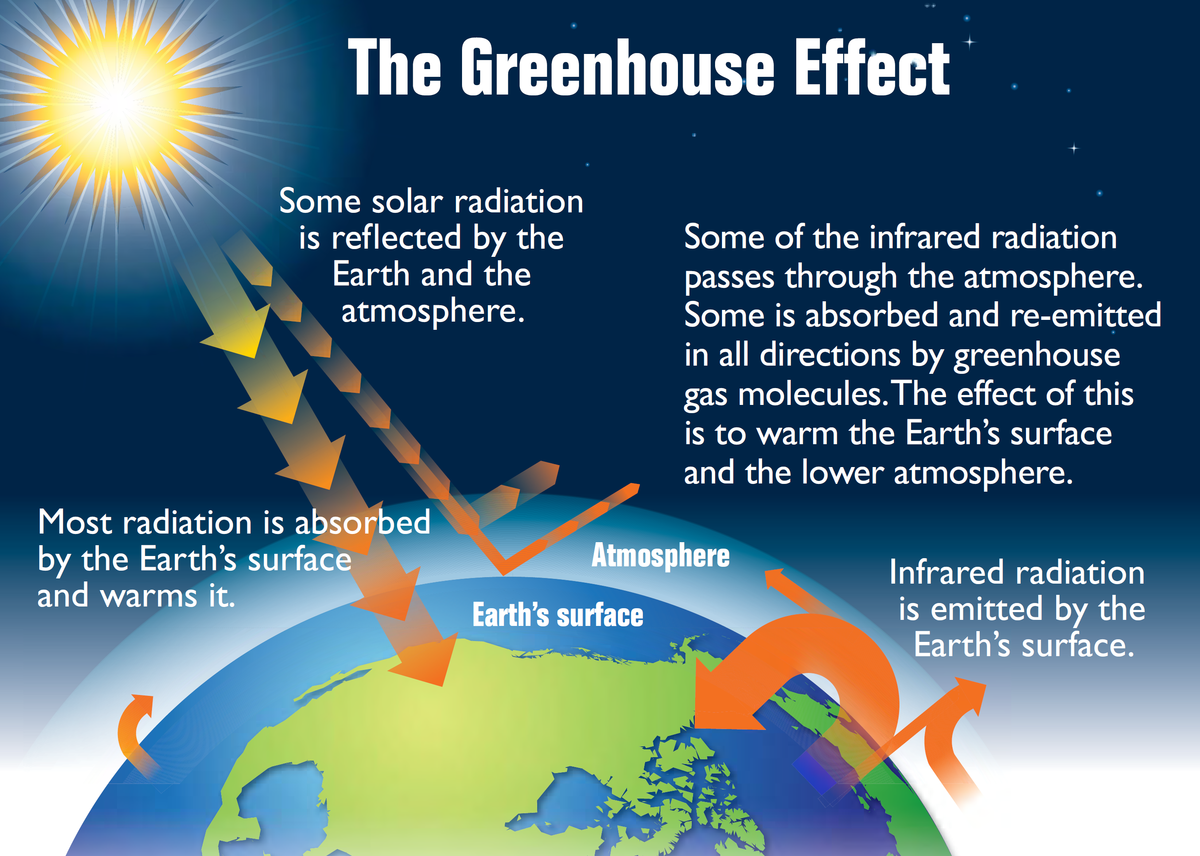



Greenhouse Effect Energy Education




The Greenhouse Effect




The Greenhouse Effect Illustration Info Graphic Natural Process That Warms The Eartha S Surface Royalty Free Cliparts Vectors And Stock Illustration Image




Gja 7th Grade Chemistry Greenhouse Gases Types Of Greenhouse Gases Water Vapor H2o Carbon Dioxide Co 2 Methane Ch4 Nitrous Oxide N2o Fluorinated Gases April 9th 12th Flashcards Quizlet




Greenhouse Effect Images Stock Photos Vectors Shutterstock




Greenhouse Gases We Cause Part 2 Methane News About Energy Storage Batteries Climate Change And The Environment




Carbon Dioxide Capture Ferize Vahabova Greenhouse Effect Naturally Occurring Greenhouse Gases Normally Trap Some Of The Sun S Heat Keeping Ppt Download




15 Sources Of Greenhouse Gases



How Greenhouse Gases Influence Climate The Weather Gamut




Greenhouse Effect Wikipedia
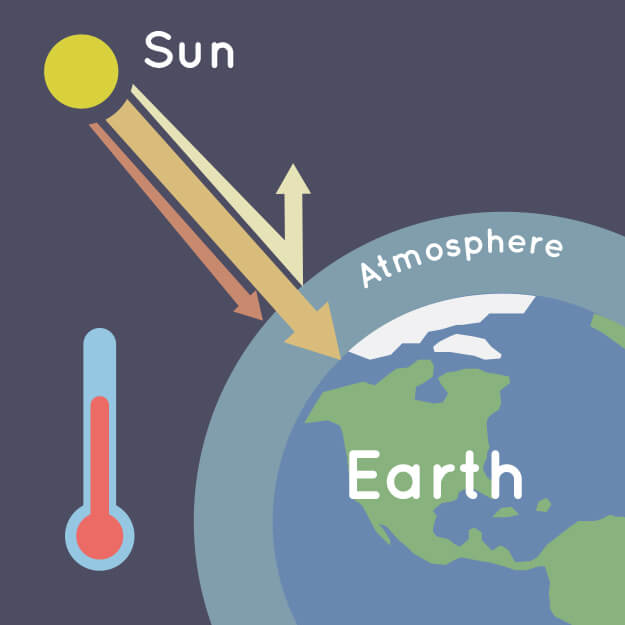



What Is The Greenhouse Effect Nasa Climate Kids




Natural And Human Enhanced Greenhouse Effect Greenhouse Gases Effect Greenhouse Gases Greenhouse Effect




Overview Of Greenhouse Gases Us Epa
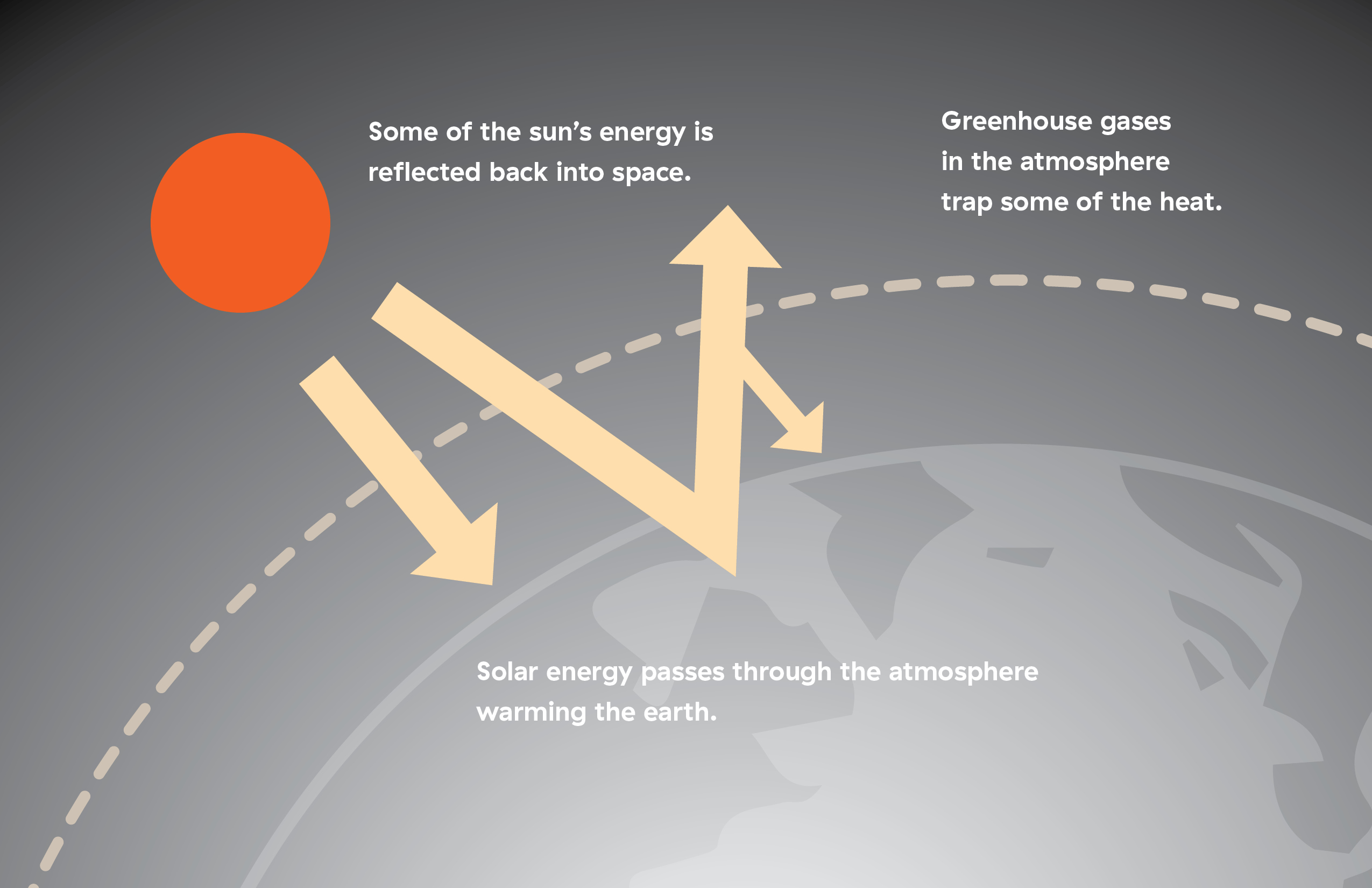



Greenhouse Effect Experiment hydro Power Smart For Schools
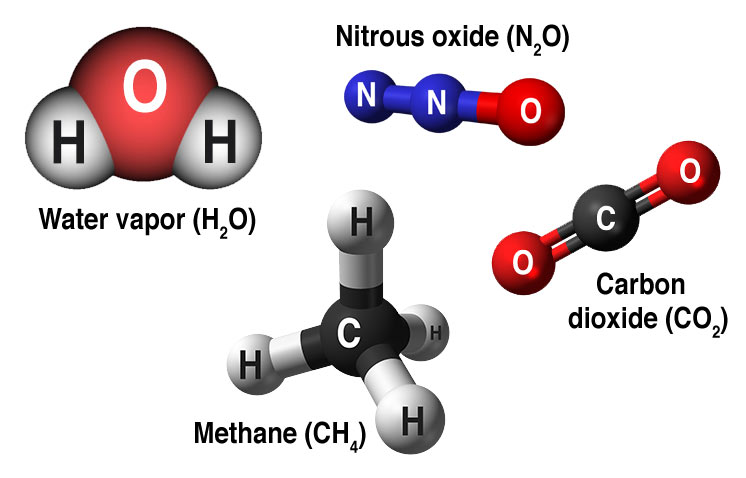



Causes Facts Climate Change Vital Signs Of The Planet



Climate Topics Global Weather Climate Center
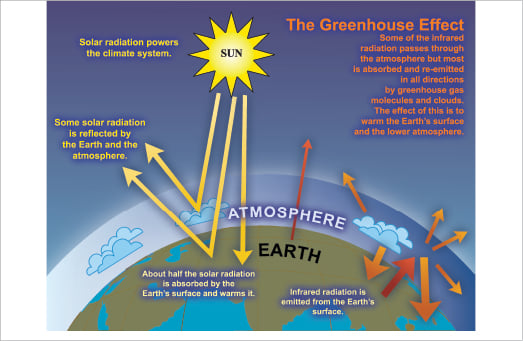



Faq 1 3 Ar4 Wgi Chapter 1 Historical Overview Of Climate Change Science




Greenhouse Effect What It Is How It Occurs And Consequences Iberdrola
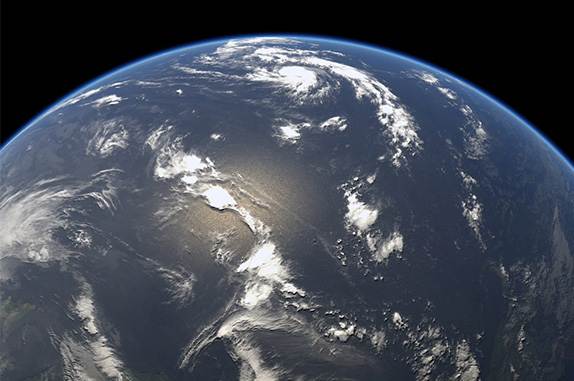



The Enhanced Greenhouse Effect Curious




Overview Of Greenhouse Gases Us Epa
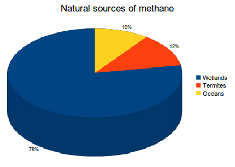



Greenhouse Gas Emissions Main Sources What S Your Impact




Greenhouse Effect Effect En Green House Glogster Edu Interactive Multimedia Posters




15 Ways To Reduce Your Carbon Footprint Greenhouse Gas




The Anthropogenic Greenhouse Effect Anthropogenic Greenhouse Effect The Enhancement Of The Natural Greenhouse Effect Due To Human Activity The Problem Ppt Download




Causes Facts Climate Change Vital Signs Of The Planet
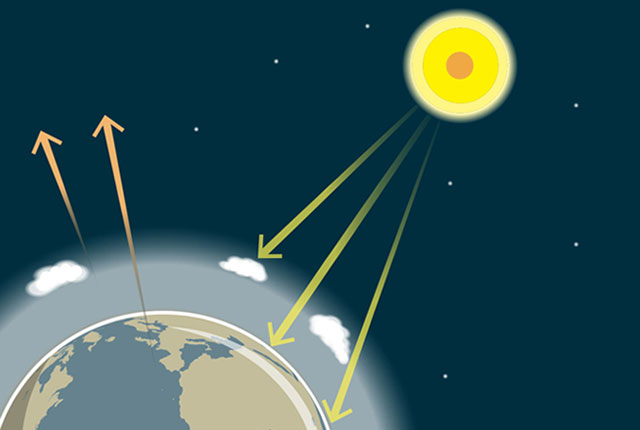



The Greenhouse Effect British Geological Survey



Greenhouse




Carbon Dioxide Methane Nitrous Oxide And The Greenhouse Effect Conservation In A Changing Climate




Human Influence On The Greenhouse Effect Globalchange Gov
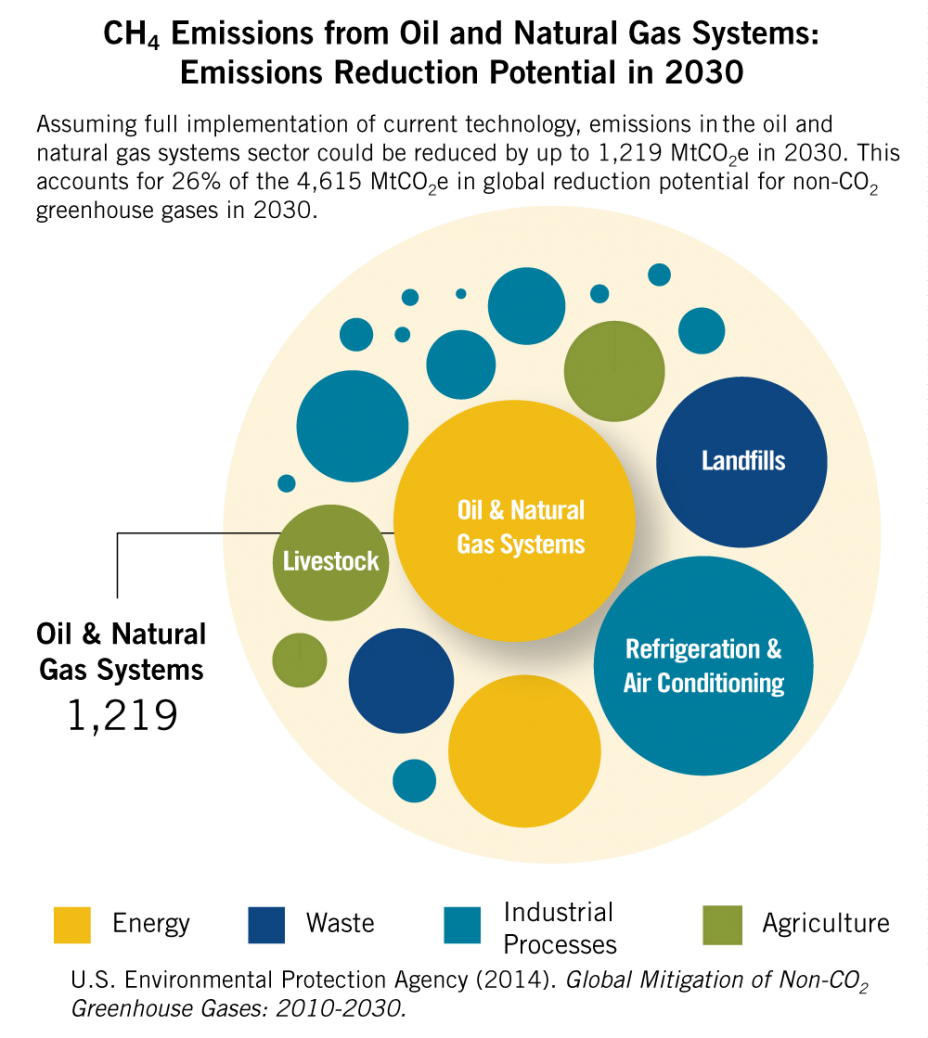



Global Mitigation Of Non Co2 Greenhouse Gases Oil And Natural Gas Systems Global Mitigation Of Non Co2 Greenhouse Gases 10 30 Us Epa




Sts The Natural Greenhouse Effect Vs The Anthropogenic Greenhouse Effect By Sean Andrew Youtube
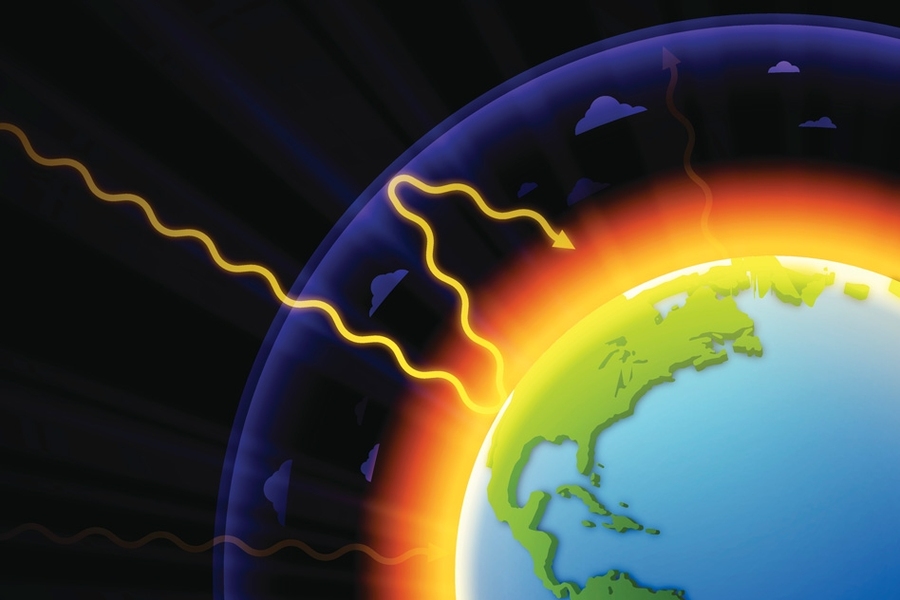



Explained Greenhouse Gases Mit News Massachusetts Institute Of Technology




The Greenhouse Effect Global Warming Brian Williams




Greenhouse Gases Earth Journalism Network
コメント
コメントを投稿